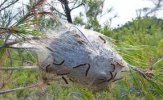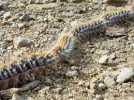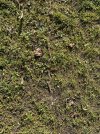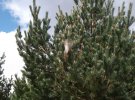Derek Booth
Active Member
- Time of past OR future Camino
- Camino Frances March 2019
Cam. Port. April 2024
I am in contact with several non Camino walkers who are currently in the Iberian Peninsular.
They are reporting that the Processionary caterpillers are falling out of their nests and starting their march across the landscape. Whilst these reports are for the more temperate parts of Spain and Portugal, I remember when doing the C. Frances in March, they were on the move. It could be that those doing the C. Portugese or Via de la Plata may come into contact with them within the next month.
For those who may be flying in from all over the World to do their personal Camino, or even those who are from Europe but unaware of this pest you should be aware of the danger posed..
The caterpiller is created from eggs laid by a moth which spins a gossamer nest, particularly in conifer trees.
At the approprite stage of life, the caterpillers drop out of the nest onto the ground and start their march, nose to tail across the landscape. The caterpillers are covered in very fine 'hairs' which can pierce the skin and cause extreme irritation. You should not pick them up and give them a very wide berth. Domestic animals are particularly prone to injury as a result of their inquisitiveness.
ADDENDUM
It may come as a surprise to readers of this wonderful facility, (ivar's website) that not everyone is aware of either the content, or Shock!!! of it's actual existence!
As someone walking any Camino over the next few months, I think it would be appropriate if, when walking and seeing the nests or even worse the caterpillars themselves, you bring them to the attention of your fellow travellers. I was a solitary walker but still was able to point out the danger to those in my 'bubble'.
A couple of photo's for you


Something NOT to do!!!

Stay safe!
They are reporting that the Processionary caterpillers are falling out of their nests and starting their march across the landscape. Whilst these reports are for the more temperate parts of Spain and Portugal, I remember when doing the C. Frances in March, they were on the move. It could be that those doing the C. Portugese or Via de la Plata may come into contact with them within the next month.
For those who may be flying in from all over the World to do their personal Camino, or even those who are from Europe but unaware of this pest you should be aware of the danger posed..
The caterpiller is created from eggs laid by a moth which spins a gossamer nest, particularly in conifer trees.
At the approprite stage of life, the caterpillers drop out of the nest onto the ground and start their march, nose to tail across the landscape. The caterpillers are covered in very fine 'hairs' which can pierce the skin and cause extreme irritation. You should not pick them up and give them a very wide berth. Domestic animals are particularly prone to injury as a result of their inquisitiveness.
ADDENDUM
It may come as a surprise to readers of this wonderful facility, (ivar's website) that not everyone is aware of either the content, or Shock!!! of it's actual existence!
As someone walking any Camino over the next few months, I think it would be appropriate if, when walking and seeing the nests or even worse the caterpillars themselves, you bring them to the attention of your fellow travellers. I was a solitary walker but still was able to point out the danger to those in my 'bubble'.
A couple of photo's for you


Something NOT to do!!!
Stay safe!
Last edited:

































